Capacitors 1 and 2 of capacitance C1 = 4μF and C2 = 12μF respectively are connected in a circuit as shown above with a resistor of resistance R = 100 Ω and two switches. Capacitor 1 is initially charged to a voltage V0 = 50 V and capacitor 2 is initially uncharged. Both of the switches S are then closed at time t = 0.a. What are the final charges on the positive plate of each of the capacitors 1 and 2 after equilibrium has been reached?b. Determine the difference between the initial and the final stored energy of the system after equilibrium has been reached.
a. The initial charge on C1 is Q = CV0 = 200μC. In equilibrium charge is no longer moving so there is no potential difference across the resistor therefore the capacitors have the same potential difference. V1 = V2 gives Q1/C1 = Q2/C2 giving Q2 = 3Q1 and since total charge is conserved we have Q1 + Q2 = Q1 + 3Q1 = 4Q1 = 200 μC so Q1 = 50 μC and Q2 = 150 μCb. ΔU = Uf – Ui = Q12/2C1 + Q22/2C2 – ½ C1V02 = –3750 μJ
Related Solutions
In the circuit shown, the capacitor is initially uncharged. The switch S is closed at t = 0. Time after which voltage across capacitor and resistor are equal is:
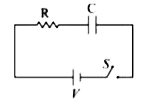
View SolutionIn the circuit shown. Initially the capacitor is uncharged. The switch S is closed at time t=0. Then
View SolutionInitially capacitor is uncharged at t = 0 switch is closed. Charge on capacitor when current in the circuit is 10 % of maximum current :
View SolutionInitially capacitor is uncharged at t = 0 switch is closed. Charge on capacitor when current in the circuit is 10 % of maximum current :
View SolutionA capacitor of capacitance is charged to a potential difference V and then connected with an uncharged capacitor of capacitance a resistance R. The switch is closed at t = 0. Choose the correct option(s):
View SolutionA capacitor of capacitance is charged to a potential difference V and then connected with an uncharged capacitor of capacitance a resistance R. The switch is closed at t = 0. Choose the correct option(s):
View SolutionInitially the capacitor is uncharged find the charge on capacitor as a function of time, if switch is closed at t=0.
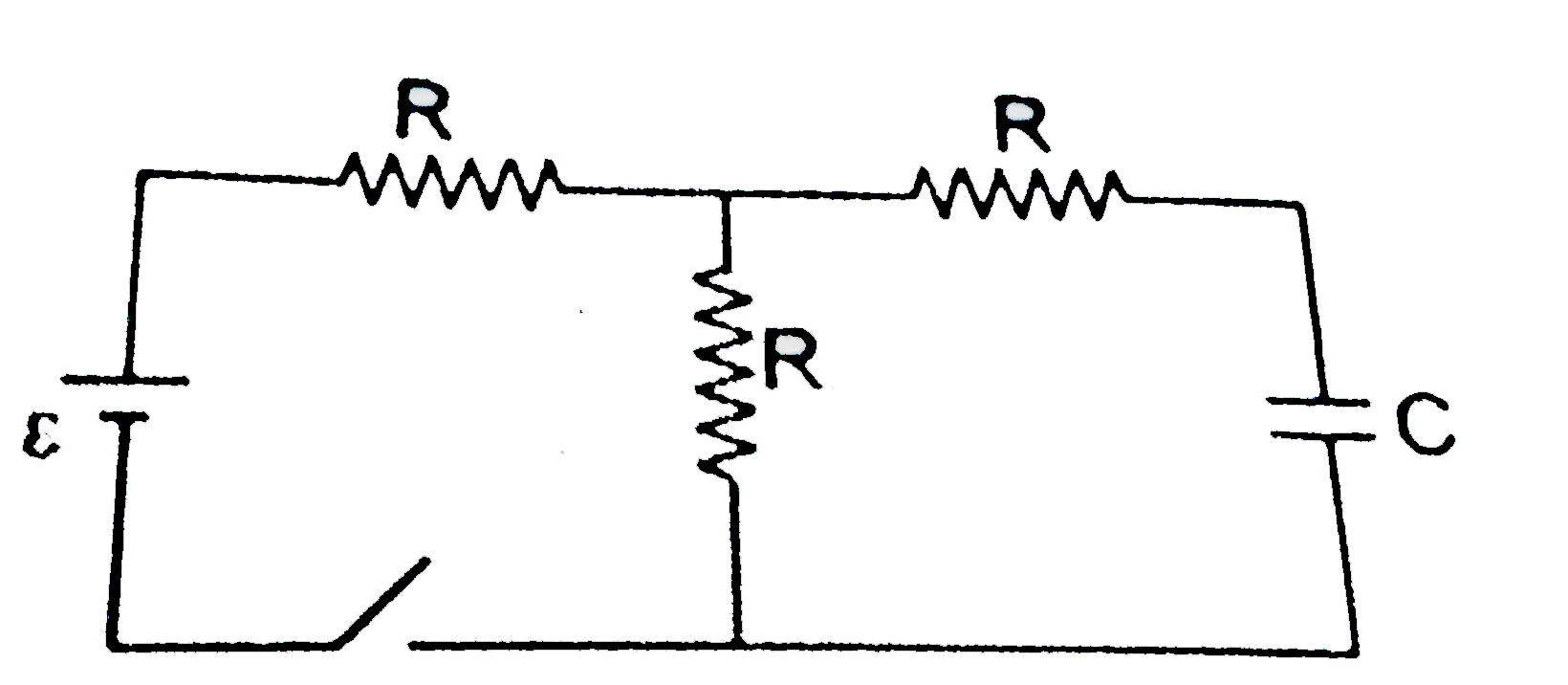
View SolutionInitially the capacitor is uncharged, find the charge on the capacitor as a function of time, if switch is closed at .

View SolutionInitially the capacitor is uncharged find the charge on capacitor as a function of time, if switch is closed at t=0.
View SolutionIn the circuit shown in the figure epsilon = 10 V v. v. B. a battery, C = 1.0 muF a capacitor of capacitance and R_(1) = 2Omega, R_(2) = 2 Omega And R_(3) = 1 Omega has three resistances. Initially the capacitor is completely uncharged and the switch is open. Switch S is closed at t = 0, then :
View SolutionIn the circuit shown in figure, the battery is an ideal one, w/The emf V. The capacitor is initially uncharged. The switch s is closed at time t = 0 The charge Q on the capacitor at time t is
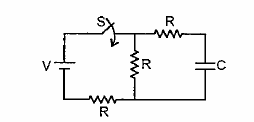
View SolutionConsider the circuit shown. Switch is closed at t=0. Find the current through the battery as a function of time. Initially capacitor was uncharged.
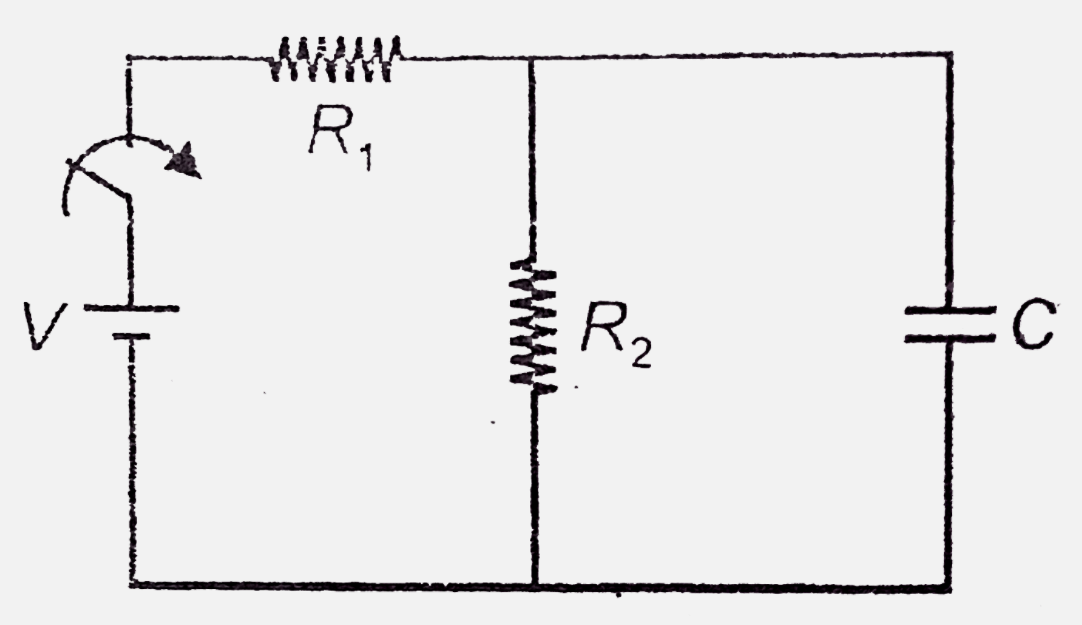
View SolutionFor the circuit shown in figure below, At t = 0, switch is closed, the initial current through resistor and final charge on capacitor are
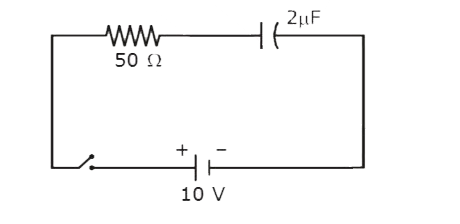
View SolutionFor the circuit shown in figure below, at t = 0, switch is closed, the initial current through resistor and final charge on capacitor are

View SolutionThe two capacitors in the circuit shown in figure are initially uncharged and then connected as shown and switch is closed. What is the potential difference across 3muF capacitor?
View SolutionThe figure-3.375 shows two circuits with a charged capacitor that is to be discharged through a resistor as shown in the figure. The ratio of initial charges on capacitors is given as q_(2)//q_(1) = 2 . If both switches are closed at time t= 0 , the charges become equal at 10^(-4) ln 2 s . Find the resistance R.
View SolutionIn the shown circuit, the switch is closed at time t=0. Initially all the capacitors were uncharged . The current through the cell, just after closing the switch is
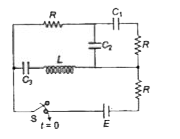
View SolutionA capacitor of capacitance 6 mu F and initial charge 1.60 muC is connected with a switch S and resistors as shown in figure-3.346. If switch is closed at t= 0 , then the currenithrough · resistor of 4 Omega at t = 16 mu s is
View SolutionA capacitor of capacitance 6 mu F and initial charge 160 muC is connected with a switch S and resistors as shown in figure-3.346. If switch is closed at t= 0 , then the currenithrough · resistor of 4 Omega at t = 16 mu s is
View SolutionAssertion : The switch shown in the figure is closed at . Initial current flowing through battery is
Reason : Initially capacitor was uncharged, so resistance offered by capacitor at is zero
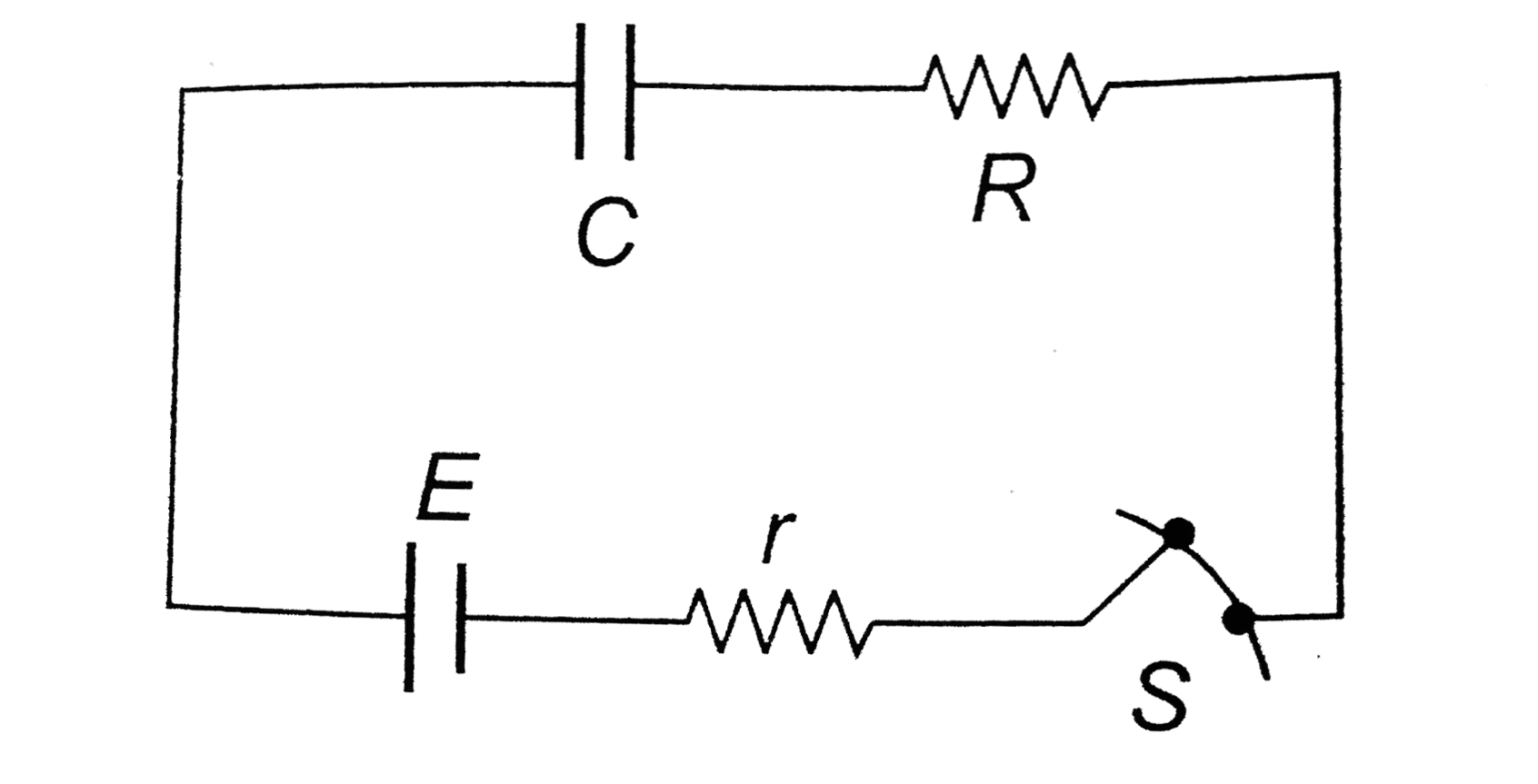
View Solution